| Listing 1 - 10 of 22 | << page >> |
Sort by
|
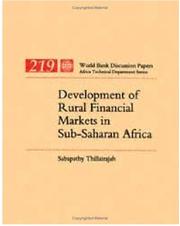
ISBN: 0821327054 Year: 1994 Publisher: Washington, D.C. World Bank
Abstract | Keywords | Export | Availability | Bookmark
 Loading...
Loading...Choose an application
- Reference Manager
- EndNote
- RefWorks (Direct export to RefWorks)
Agricultural credit --- Agricultural lending --- Farm credit --- Farm loans --- Agriculture --- Rural credit --- Finance --- #A9410E --- Money market. Capital market --- Sub-Saharan Africa
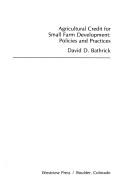
ISBN: 0865310378 Year: 1981 Publisher: Boulder (Colo.) : Westview press,
Abstract | Keywords | Export | Availability | Bookmark
 Loading...
Loading...Choose an application
- Reference Manager
- EndNote
- RefWorks (Direct export to RefWorks)
Agricultural credit --- Social Sciences and Humanities. Agricultural Economics --- Agricultural Economics (General) --- Agricultural Economics (General). --- Agricultural lending --- Farm credit --- Farm loans --- Agriculture --- Rural credit --- Finance
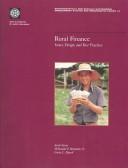
ISBN: 0821337378 Year: 1997 Publisher: Washington, D.C. World Bank
Abstract | Keywords | Export | Availability | Bookmark
 Loading...
Loading...Choose an application
- Reference Manager
- EndNote
- RefWorks (Direct export to RefWorks)
Agricultural credit --- Rural credit --- Credit --- Agricultural lending --- Farm credit --- Farm loans --- Agriculture --- Finance --- Private finance --- Developing countries: agricultural and food problems
Book
ISBN: 2701301823 Year: 1978 Publisher: Paris : Berger-Levrault,
Abstract | Keywords | Export | Availability | Bookmark
 Loading...
Loading...Choose an application
- Reference Manager
- EndNote
- RefWorks (Direct export to RefWorks)
Agricultural credit --- FR / France - Frankrijk --- 338.317.3 --- 333.112.2 --- 333.711 --- Coöperatieve landbouworganisatie. --- kredietinstellingen voor de landbouw. --- landbouwkrediet. --- Agricultural lending --- Farm credit --- Farm loans --- kredietinstellingen voor de landbouw --- landbouwkrediet --- Coöperatieve landbouworganisatie --- Agriculture --- Rural credit --- Finance
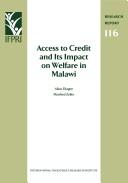
ISBN: 0896291197 Year: 2001 Publisher: Washington, D.C. International Food Policy Research Institute
Abstract | Keywords | Export | Availability | Bookmark
 Loading...
Loading...Choose an application
- Reference Manager
- EndNote
- RefWorks (Direct export to RefWorks)
Land. Real estate --- Microeconomics --- Economic geography --- Quantitative methods (economics) --- Malawi --- Agricultural credit --- cooperative activities --- Credit policies --- Econometrics --- Econometric models --- -Rural poor --- Rural poverty --- Poor --- Agricultural lending --- Farm credit --- Farm loans --- Agriculture --- Rural credit --- Economic conditions --- Finance --- Rural poor --- -Agricultural credit --- Microfinance

ISBN: 8323302278 Year: 1988 Volume: vol 895 vol 128
Abstract | Keywords | Export | Availability | Bookmark
 Loading...
Loading...Choose an application
- Reference Manager
- EndNote
- RefWorks (Direct export to RefWorks)
Agricultural credit --- -Agricultural lending --- Farm credit --- Farm loans --- Agriculture --- Rural credit --- History --- -Finance --- Panstwowy Bank Rolny (Poland) --- -Państwowy Bank Rolny, Warsaw --- Poland. --- -History --- -Panstwowy Bank Rolny (Poland) --- Agricultural lending --- Finance --- Państwowy Bank Rolny (Poland) --- Państwowy Bank Rolny, Warsaw --- History.

ISBN: 1315017512 0415330157 1136536612 1138010227 1299995810 9781136536618 9781315017518 9780415330152 9781136536755 1136536752 9781136536687 113653668X 9781138010222 Year: 2004 Publisher: London
Abstract | Keywords | Export | Availability | Bookmark
 Loading...
Loading...Choose an application
- Reference Manager
- EndNote
- RefWorks (Direct export to RefWorks)
The formation and management of capital are among the central issues in economic growth, especially in 'under-developed' countries, and form the main theme in this volume. The societies examined vary widely, both geographically and also in terms of types of social and economic structures.
First published in 1964.
Agriculture --- Agricultural credit. --- Economic aspects. --- Developing countries. --- Agricultural lending --- Farm credit --- Farm loans --- Agrarian question --- Agribusiness --- Agricultural economics --- Agricultural production economics --- Production economics, Agricultural --- Economic aspects --- Emerging nations --- Fourth World --- Global South --- LDC's --- Least developed countries --- Less developed countries --- Newly industrialized countries --- Newly industrializing countries --- NICs (Newly industrialized countries) --- Third World --- Underdeveloped areas --- Underdeveloped countries --- Rural credit --- Land use, Rural --- Finance
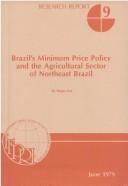
ISBN: 0896290107 Year: 1979 Publisher: Washington, D.C. IFPRI
Abstract | Keywords | Export | Availability | Bookmark
 Loading...
Loading...Choose an application
- Reference Manager
- EndNote
- RefWorks (Direct export to RefWorks)
Agricultural credit --- Agricultural price supports --- Agriculture --- 338.5 <81> --- <81> --- <81> Brazilië --- Brazilië --- Farm price supports --- Agricultural prices --- Agricultural subsidies --- Agricultural lending --- Farm credit --- Farm loans --- Rural credit --- Economic aspects --- Prijsvorming. Prijskostenverhouding. Prijsbeweging. Prijsfluctuatie--Brazilië --- Government policy --- Finance --- Zonder onderwerpscode: wereldeconomie, ontwikkelingsproblematiek
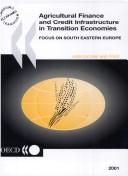
ISBN: 1280034912 9786610034918 9264195645 9264195475 Year: 2001 Publisher: Paris Organization for Economic Cooperation and Development
Abstract | Keywords | Export | Availability | Bookmark
 Loading...
Loading...Choose an application
- Reference Manager
- EndNote
- RefWorks (Direct export to RefWorks)
- What has been achieved in rural finance and institutional reform during more than a decade of transition and what challenges remain? - What are the special needs of South Eastern European countries to attract agricultural credit and finance to their troubled agro-food sectors? - What should be the role of governments to facilitate the development of sustainable rural finance and credit systems? - How should the banking sector innovate to respond to significant transformations in farm ownership and production structure? - What are the advantages and perspectives of rural credit co-operatives? - What is the role of trade and manufacturer credit? - Can micro-finance be successful in helping to reduce rural credit constraints and stimulate rural development? These are some of the issues addressed in the proceedings of the OECD expert meeting: "Agricultural Finance and Credit Infrastructure in Transition Economies", held in Portoroz, Slovenia on 29-30 May 2001. Over 90 participants, including policy makers, government officials, bankers, agro-business, independent experts, and academics from 22 countries and international organisations focused on the special issues in this sector for South Eastern Europe, Russia and Ukraine. This book is part of the OECD's ongoing co-operation with non-Member economies around the world.
Agricultural credit -- Developing countries -- Congresses. --- Agricultural credit -- Europe, Eastern -- Congresses. --- Agriculture -- Developing countries -- Finance -- Congresses. --- Agriculture -- Europe, Eastern -- Finance -- Congresses. --- Informal sector (Economics) -- Developing countries -- Congresses. --- Informal sector (Economics) -- Europe, Eastern -- Congresses. --- Agricultural credit --- Agriculture --- Finance --- Farming --- Husbandry --- Industrial arts --- Life sciences --- Food supply --- Land use, Rural --- Agricultural lending --- Farm credit --- Farm loans --- Rural credit --- Slovenia --- Informal sector (Economics) --- Crédit agricole --- Secteur informel (Economie politique) --- Congresses --- Congrès --- Finances
Book
ISBN: 3838267850 9783838267852 Year: 2015 Publisher: Stuttgart
Abstract | Keywords | Export | Availability | Bookmark
 Loading...
Loading...Choose an application
- Reference Manager
- EndNote
- RefWorks (Direct export to RefWorks)
Even though traditional microfinance has successfully paved the way for offering financial services to low-income populations without traditional collateral, many microfinance institutions (MFIs) are still reluctant to move into rural areas and agricultural finance, due to the perceived high risks and costs. Daniela ROttger's research demonstrates how MFIs can mitigate risks and costs of lending to smallholder farmers by using a combination of proven traditional microfinance mechanisms while adapting specific loan features and lending mechanisms to the particularities of smallholder agriculture. She systematically compares traditional microfinance risk management mechanisms with agricultural microfinance approaches and identifies successful strategies. For this purpose, eight MFIs providing agricultural finance to smallholder farmers in four countries in East and West Africa (Uganda, Kenya, Benin, Cameroon) were interviewed and their loan features and agricultural lending mechanism were analyzed. The study shows that MFIs can successfully serve smallholder farmers in rural areas. However, the extent of adaptations is reason enough not to commit to such an endeavor lightly. A strong commitment combined with sound in-house knowledge of agricultural value chains and the flexibility to adapt loan terms and lending procedures to the particularities of agriculture are needed to successfully develop and sustain agricultural microfinance.
Agricultural credit --- Microfinance --- Farms, Small --- Small farms --- Small holdings (Agriculture) --- Small-scale agriculture --- Farms, Size of --- Family farms --- Micro-finance --- Microcredit --- Microenterprise lending --- Microlending --- Financial services industry --- Small business --- Agricultural lending --- Farm credit --- Farm loans --- Agriculture --- Rural credit --- Finance --- Rural development --- Community development, Rural --- Development, Rural --- Integrated rural development --- Regional development --- Rehabilitation, Rural --- Rural community development --- Rural economic development --- Agriculture and state --- Community development --- Economic development --- Regional planning --- Citizen participation --- Social aspects --- E-books
| Listing 1 - 10 of 22 | << page >> |
Sort by
|

 Search
Search Feedback
Feedback About UniCat
About UniCat  Help
Help News
News